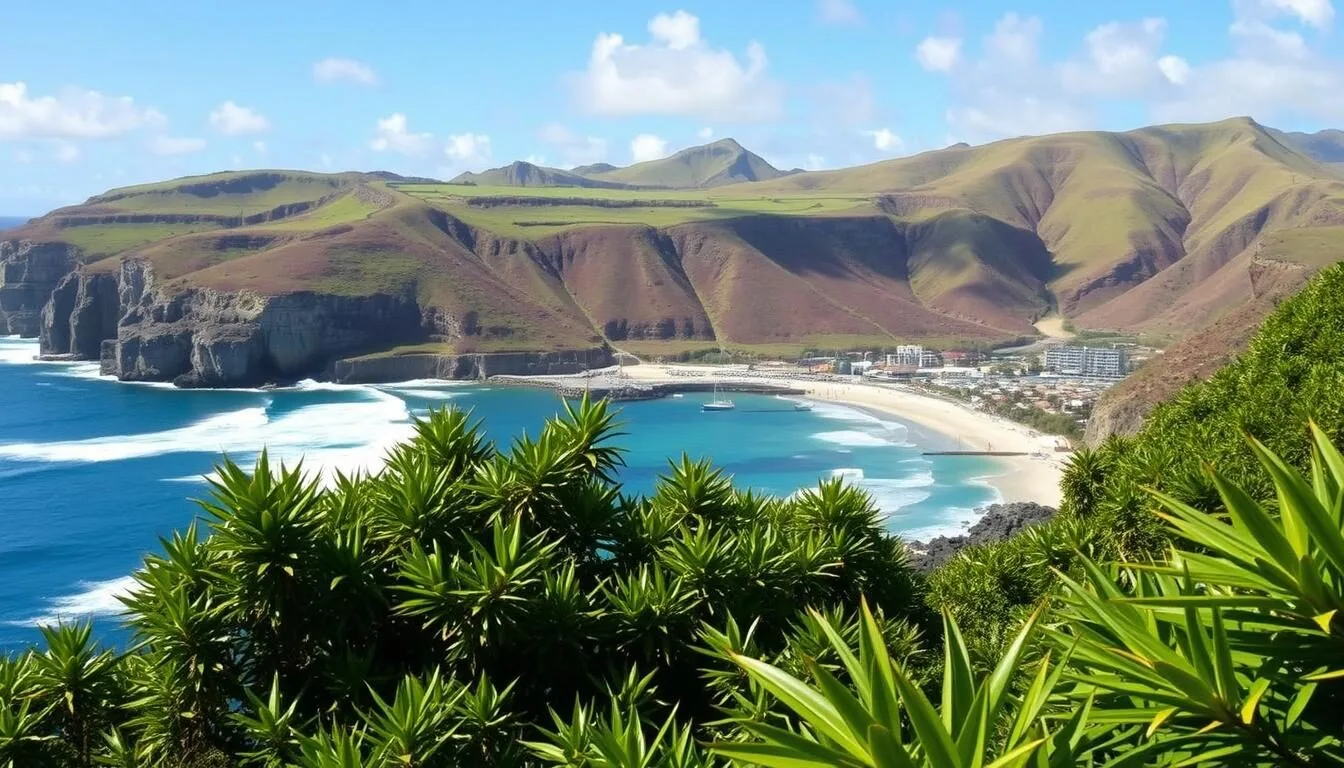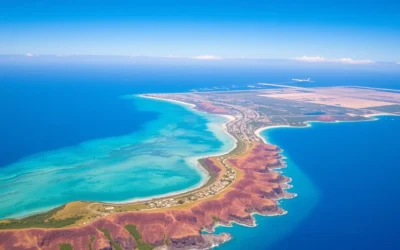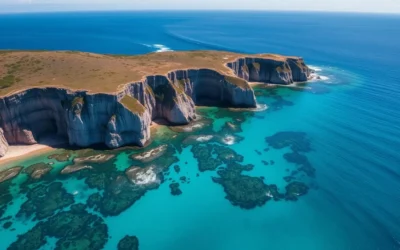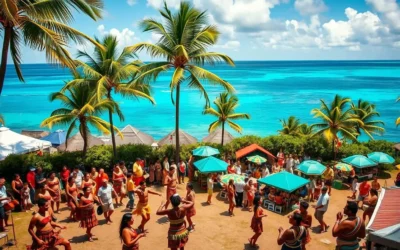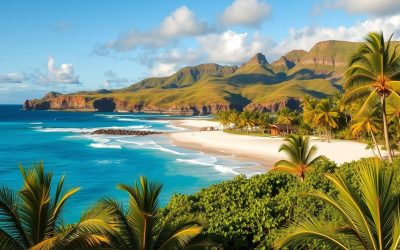✓ Accommodations✓ Flights✓ Rental Cars
Are you planning a trip to the serene island of Niue? With only two distinct seasons, choosing the right time to visit can be straightforward. However, understanding the weather patterns and tourist seasons can make a significant difference in your travel experience.
You might be surprised to know that July and August are considered the best months to visit, offering dry weather and exciting activities like whale watching. On the other hand, September and October provide a great balance of fewer tourists and pleasant weather, making them an insider’s secret for an ideal trip.
This guide will help you determine the best time to plan your visit, ensuring you make the most of your Niue experience.
Understanding Niue’s Climate
To make the most of your trip to Niue, it’s essential to grasp the island’s climatic conditions. Niue, a small island nation in the Pacific, has a tropical climate influenced by its geographical location.
Geographical Location and Its Impact on Weather
Niue’s location in the South Pacific, northeast of New Zealand, exposes it to tropical weather patterns. The island’s climate is characterized by warm temperatures and high humidity throughout the year. Its geographical isolation also means that weather patterns can be somewhat predictable, with two distinct seasons shaping the visitor experience.
The Two Seasons of Niue
Niue’s climate is divided into the dry season (May to October) and the wet season (November to April). The dry season offers cooler temperatures, ranging from 21-27°C (70-81°F), lower humidity, and less rainfall, making it the preferred time for tourists. In contrast, the wet season brings warmer temperatures and increased rainfall, though showers are typically brief.
| Season | Months | Temperature Range | Rainfall Characteristics |
|---|---|---|---|
| Dry Season | May – October | 21-27°C (70-81°F) | Significantly less rainfall |
| Wet Season | November – April | 22-29°C (72-84°F) | Rainfall averages 156-300mm/month |
Niue: Best Months for a Weather-Savvy Trip
With its tropical climate, Niue is a year-round destination, but certain months stand out as ideal for a weather-savvy trip. The island’s dry season, which runs from May to October, is particularly appealing due to its pleasant weather conditions.
July and August: The Popular Choice
July and August are the peak months for visiting Niue, attracting the largest number of tourists. During this period, the weather is dry and sunny, making it perfect for outdoor activities like snorkeling, diving, and exploring the island’s natural wonders. However, this popularity comes with larger crowds and higher prices for accommodations and flights.
September and October: The Insider’s Secret
For those looking for a more relaxed experience, September and October are considered the best months to visit Niue. These months offer a great combination of fewer tourists, pleasant weather, and more accommodation options. The dry season is still in full swing, with temperatures ranging from 26-27°C (79-81°F) during the day. Moreover, you can still catch the whale watching season in early September and sometimes mid-October, making it an ideal time for an unforgettable experience.
| Month | Average Temperature (°C) | Average Rainfall (mm) | Tourist Season |
|---|---|---|---|
| July | 26 | 100 | Peak |
| August | 26 | 120 | Peak |
| September | 27 | 121 | Shoulder |
| October | 27 | 138 | Shoulder |
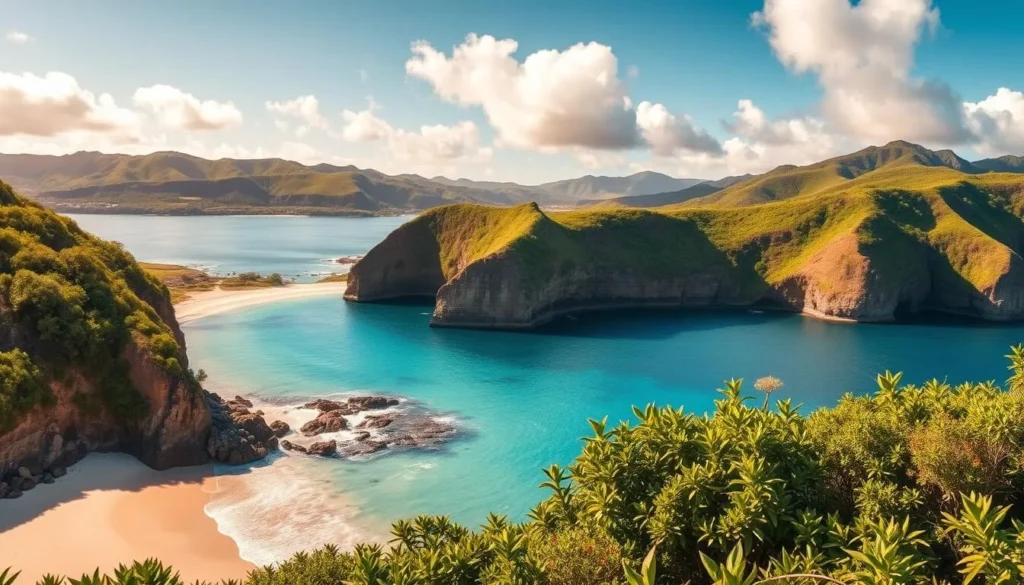
The Dry Season: May to October
As you plan your trip to Niue, understanding the dry season can greatly enhance your travel experience. The dry season, which runs from May to October, is characterized by comfortable temperatures and reduced rainfall, making it an ideal time for outdoor activities and exploring the island.
Temperature and Rainfall Patterns
During the dry season, Niue experiences daytime temperatures ranging from 25-27°C (77-81°F), while evenings can cool down to around 20°C (68°F). This comfortable temperature range makes it perfect for enjoying the island’s natural beauty, from hiking to simply taking in the views. Rainfall is significantly reduced during these months, although brief, unexpected showers can still occur.
| Month | Average High Temperature (°C) | Average Rainfall (mm) |
|---|---|---|
| May | 26 | 80 |
| June | 25 | 50 |
| July | 24 | 40 |
| August | 25 | 45 |
| September | 26 | 60 |
| October | 27 | 70 |
What to Pack for Dry Season Travel
To make the most of your trip to Niue during the dry season, it’s essential to pack appropriately. Here are some tips for what to bring:
- Lightweight, breathable clothing for warm daytime temperatures.
- A light sweater or jacket for cooler evenings, especially if you plan to enjoy outdoor dining or stargazing.
- Sun protection essentials, including a wide-brimmed hat, high-SPF sunscreen, sunglasses, and a rash guard for snorkeling.
- A lightweight, packable rain jacket, as brief showers can still occur.
- Quick-dry clothing and water shoes for water activities, along with snorkeling gear if you prefer to bring your own.
The Wet Season: November to April
As you plan your trip to Niue, understanding the wet season is crucial for making the most of your travel experience. The wet season, which runs from November to April, is a period of significant rainfall and increased humidity.
Understanding Tropical Rainfall
Tropical rainfall in Niue during the wet season is characterized by heavy downpours that are usually short-lived. This pattern means that even during the wettest months, there are still plenty of opportunities to enjoy outdoor activities. The rainfall is essential for maintaining Niue’s lush landscapes, making the island even more beautiful during this time.
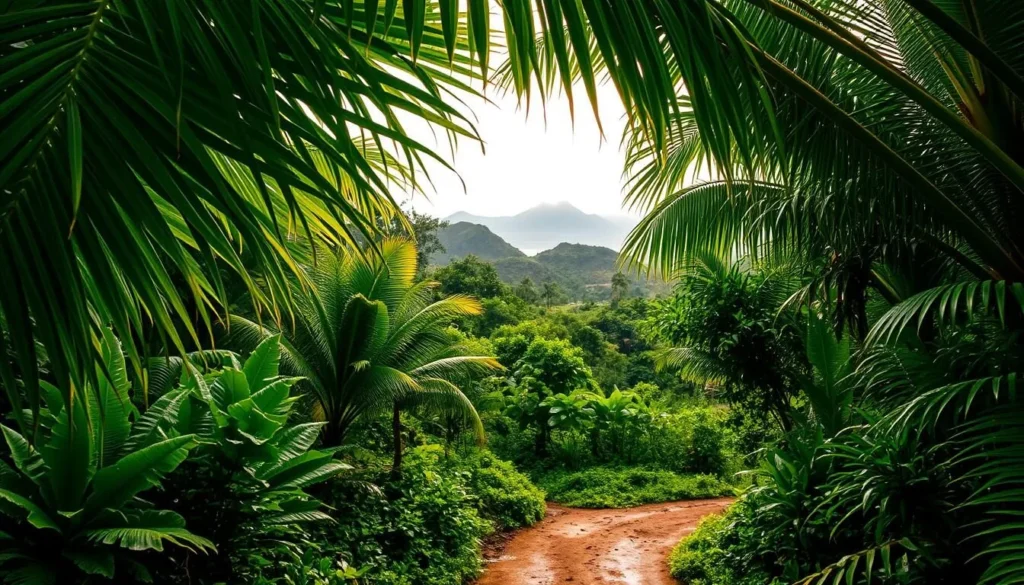
Humidity and Comfort Considerations
One of the main factors to consider during Niue’s wet season is the humidity. Relative humidity often reaches 80-90%, which can feel uncomfortable for visitors not accustomed to tropical climates. However, most accommodations are designed to help you stay comfortable, with features like ceiling fans, air conditioning, and strategically placed windows with mosquito screens.
| Comfort Considerations | Solutions |
|---|---|
| High Humidity | Ceiling fans, air conditioning |
| Hot Temperatures | Water activities, lightweight clothing |
| Lush Landscapes | Opportunities for photography and nature walks |
Tourist Seasons in Niue
Understanding the tourist seasons in Niue is crucial for planning a trip that meets your expectations. The island’s tourist calendar is characterized by three main seasons: high season, low season, and shoulder seasons, each with its unique advantages and characteristics.
High Season: July to August & December to January
The high season in Niue, which includes July to August and December to January, is the peak tourist period. During this time, you can expect larger crowds and higher prices. However, the weather is typically at its best, making it ideal for outdoor activities and water sports. If you’re looking for a vibrant atmosphere and don’t mind the crowds, this is the best time to visit Niue.
Low Season: Mid-January to March
The low season, from mid-January to March, is characterized by fewer tourists and potentially lower prices. However, this period coincides with the wet season, which might affect your outdoor plans. If you’re on a tight budget and don’t mind the occasional rain, this could be a good time to visit.
Shoulder Seasons: April to June & September to November
The shoulder seasons, which include April to June and September to November, offer a great balance between weather and crowd size. You’ll experience fewer tourists than during the high season, and the weather is generally pleasant. September and October are particularly popular for whale watching, making the latter shoulder season an attractive time to visit. The table below summarizes the key characteristics of each season:
| Season | Months | Weather | Crowds | Prices |
|---|---|---|---|---|
| High Season | Jul-Aug, Dec-Jan | Best | Large | Higher |
| Low Season | Mid-Jan to Mar | Wet | Fewer | Lower |
| Shoulder Seasons | Apr-Jun, Sep-Nov | Pleasant | Fewer | Moderate |
Month-by-Month Weather Guide
To make the most of your trip to Niue, it’s essential to understand the island’s seasonal weather patterns. Niue’s climate is characterized by two main seasons: the dry season and the wet season. Understanding these seasons and their characteristics will help you plan your activities and make the most of your visit.
January to March: Summer Heat
January to March is Niue’s summer, characterized by high temperatures and increased humidity. During this period, you can expect average temperatures to soar, making it ideal for beach activities and water sports. However, it’s also the wet season, so be prepared for occasional rain showers.
April to June: Transition to Dry Season
As April to June progresses, Niue transitions into its dry season. The temperatures remain warm, but the humidity decreases, making it a comfortable time to visit. This period is ideal for outdoor activities such as hiking and exploring the island’s natural beauty.
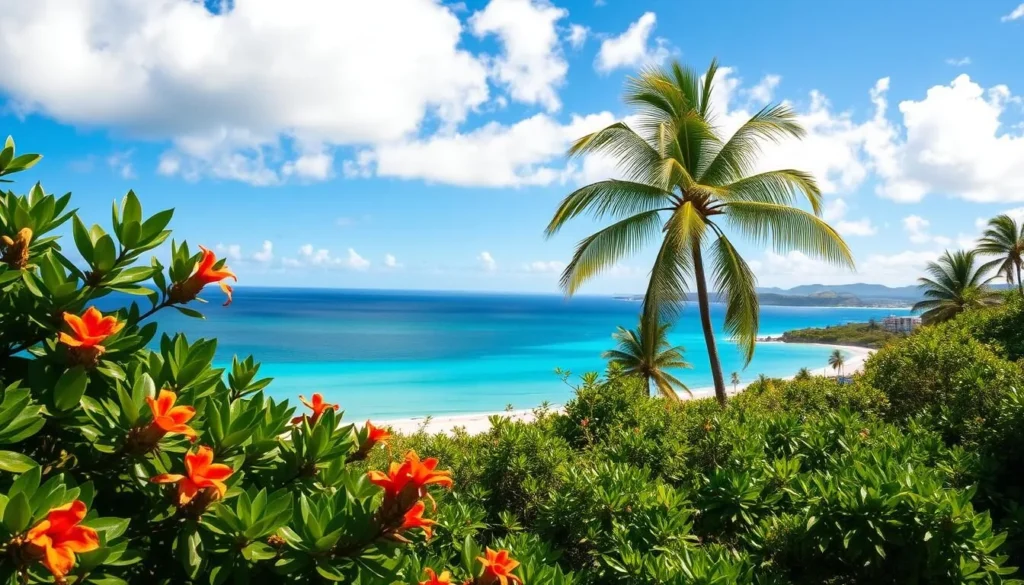
July to September: Prime Visiting Time
July to September is considered the prime time to visit Niue. The weather is pleasant and dry, with comfortable temperatures, making it perfect for a variety of activities, including snorkeling, diving, and cultural events. It’s also the peak tourist season, so you can expect a lively atmosphere.
October to December: Transition to Wet Season
October through December marks the transition back to the wet season. Temperatures gradually rise, and rainfall increases. While early October may still offer some dry days, November and December see more frequent rain showers. However, this period also brings unique experiences, such as Niue’s Christmas and New Year celebrations.
By understanding Niue’s month-by-month weather guide, you can plan your trip according to your preferences and make the most of your time on the island.
- October: Average temperature 27°C/81°F, Average rainfall 121 mm/4.8 in.
- November: Average temperature 27°C/81°F, Average rainfall 156 mm/6.1 in.
- December: Average temperature 28°C/82°F, Average rainfall 161 mm/6.3 in.
Whale Watching Season: When to See Humpbacks
Niue’s waters are a haven for humpback whales, making it an ideal destination for whale watching enthusiasts. If you’re looking to experience the thrill of swimming with these majestic creatures, understanding the whale watching season is crucial.
Peak Months for Whale Encounters
The peak months for whale encounters in Niue are between July and September. During this time, the waters are filled with humpback whales, providing a unique opportunity for an up-close experience. It’s highly recommended that you book your whale watching tour during these months for the best experience.
| Month | Whale Watching Activity |
|---|---|
| July | High |
| August | High |
| September | High |
Booking Whale Swimming Tours
When booking your whale swimming tour, it’s essential to choose a licensed operator to ensure a safe and regulated experience. You should book your tour in advance, especially during peak season, to avoid disappointment. Tour operators typically offer morning and afternoon sessions, with morning tours often providing better conditions for underwater photography.
- Whale swimming tours are strictly regulated, with only licensed operators permitted.
- Book your tour in advance to secure your spot during peak season.
- Morning tours often offer calmer seas and better visibility.
Water Activities and Tide Considerations
Niue’s stunning marine environments are heavily influenced by the tides, making it essential to plan your water activities accordingly. Understanding the tide patterns can significantly enhance your snorkeling, diving, and other sea-related experiences.
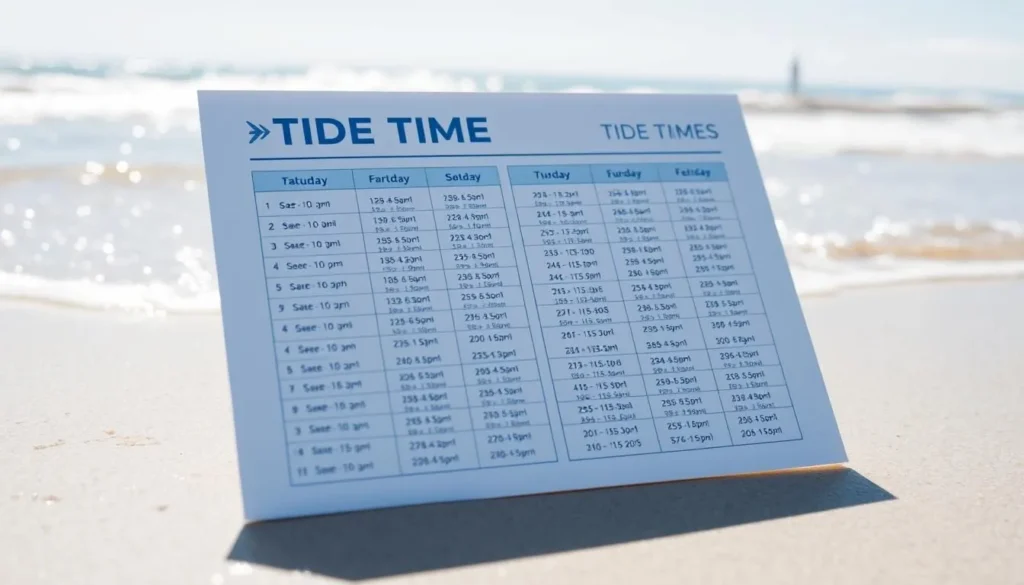
Best Months for Snorkeling and Diving
The best time for snorkeling and diving in Niue depends on the tide conditions. Most snorkeling spots are accessible during low tide, making it crucial to plan your trip around these times for an optimal experience. Avid snorkelers may also want to avoid the kaloama season when some sea tracks and snorkeling spots are closed.
Generally, the dry season, from May to October, offers calm seas and clear visibility, ideal for underwater activities. However, it’s essential to check the tide charts to ensure that low tides occur at convenient hours, typically between 8 am and 4 pm.
Understanding Tide Times for Sea Tracks
Tide times significantly affect Niue’s sea tracks and marine access points, with many sites only safely accessible during low or mid-tide conditions. When planning your trip, checking tide charts for your travel dates is advisable to ensure that you can explore Niue’s marine environments at convenient times.
- Tide times shift approximately 50 minutes later each day, requiring flexible planning of your daily activities.
- Some of Niue’s most spectacular sites, like the Matapa Chasm and Limu Pools, are best visited at specific tide levels, maximizing your experience.
- Local accommodations and the Visitor Information Centre provide daily tide charts, and discussing tide-dependent activities with locals or tour operators can help recommend the best times for each location.
By understanding and planning around the tide times, you can make the most of your water activities in Niue, ensuring a memorable and enjoyable trip.
Fishing in Niue Throughout the Year
Fishing in Niue is a year-round activity, with the best catches varying by season. Whether you’re targeting game fish or enjoying a leisurely fishing trip, understanding the seasonal patterns can enhance your experience.
Seasonal Fish Species
Niue’s waters are home to a diverse range of fish species, each with its own seasonal peak. For instance, wahoo and mahimahi are abundant during the dry/winter season, while yellowfin tuna and dogtooth tuna are more commonly caught during the wet/summer season.
| Fish Species | Best Season |
|---|---|
| Wahoo | Dry/Winter |
| Mahimahi | Dry/Winter |
| Yellowfin Tuna | Wet/Summer |
| Dogtooth Tuna | Wet/Summer |
Best Months for Game Fishing
The best time for game fishing in Niue varies, but July through September is considered prime for catching wahoo and mahimahi. April and May offer a mix of end-of-wet-season and beginning-of-dry-season species, making them excellent months for diverse catches. Discussing your target species with fishing charter operators can help you make the most of your trip.
Cultural Events and Village Show Days
Experience the vibrant culture of Niue by attending one of its many cultural events and celebrations throughout the year. Niue’s cultural calendar is rich with activities that offer a glimpse into the island’s heritage and traditions.
Traditional Celebrations Calendar
Niue’s traditional celebrations are an integral part of the island’s identity. The Ukulele Festival in March is a highlight, bringing together local and international musicians for performances and workshops. Additionally, the Niue Arts and Cultural Festival, held biennially, showcases traditional and contemporary Niuean arts, crafts, dance, and music.
Constitution Week and Other Key Events
The third week in October is a significant time in Niue’s calendar, as it commemorates the island’s self-governing status in free association with New Zealand. Constitution Week includes three public holidays, featuring flag-raising ceremonies, cultural performances, and sporting competitions. It’s a must-attend event if you’re on the island during this time. Other notable events include the Rockman Competition and fishing tournaments, which offer opportunities for participation and spectatorship.

Budget Considerations by Season
When planning your trip to Niue, understanding the budget implications by season can make a significant difference. Your travel expenses can vary greatly depending on the time of year you choose to visit.
Accommodation Pricing Throughout the Year
Accommodation prices in Niue fluctuate with the season. During the peak season, which includes July and August, as well as December and January, prices tend to be higher due to increased demand. In contrast, the low season, typically from mid-January to March, offers more affordable rates. If you’re looking for a balance, consider visiting during the shoulder season (April to June or September to November), when prices are relatively more manageable.
Finding the Best Flight Deals to Niue
To secure the best flight deals to Niue, it’s essential to be flexible with your travel dates. Flights to Niue are primarily available from Auckland, New Zealand, with the best deals typically found during the low and shoulder seasons, particularly in November and from February to April. Booking at least three months in advance is crucial for securing the best fares. Additionally, consider breaking your journey with a stopover in Auckland if you’re traveling from further afield, as this can sometimes result in better overall prices for your trip. By following these travel tips, you can make your Niue trip more affordable.
Avoiding Crowds: Tips for a Relaxed Experience
Niue, a serene island paradise, offers a tranquil getaway, but timing your visit right can make all the difference in avoiding crowds. Even during the busiest months, July and August, the island remains relatively uncrowded, with a maximum of around 200 tourists at any given time.
Traveling During Shoulder Seasons
Consider visiting Niue during the shoulder seasons, which include April to June and September to November. These periods offer a great balance between comfortable weather and fewer tourists, making your travel experience even more enjoyable. You can take advantage of the pleasant climate to explore the island’s attractions without the peak season crowds.
Less-Visited Spots During Peak Season
If you must visit during peak season, there are still ways to avoid the crowds. Explore the eastern and northern coasts, which are less frequented than the western attractions. Visiting popular sites like Matapa Chasm and Talava Arches early in the morning or later in the afternoon can also help you avoid the day-trippers. Additionally, consider exploring lesser-known sea tracks like Togo Chasm and Uluvehi for a more secluded experience.
| Tips for Avoiding Crowds | Benefits |
|---|---|
| Visit during shoulder seasons (April to June and September to November) | Fewer tourists, comfortable weather |
| Explore eastern and northern coasts | Less crowded than western attractions |
| Visit popular sites early morning or late afternoon | Avoid day-trippers |
| Discover lesser-known sea tracks like Togo Chasm and Uluvehi | More secluded experiences |

Weather Differences Across the Island
Niue’s diverse geography creates a variety of weather conditions across the island. Understanding these differences is essential for planning your activities and choosing the right accommodation.
Coastal vs. Inland Conditions
The central forest areas of Niue retain moisture more effectively than the coastal regions, resulting in slightly higher humidity levels and occasional brief rain showers even during the dry season. In contrast, the coastal areas tend to be drier and sunnier.
Microclimates to Be Aware Of
The island’s unique topography creates several microclimates that travelers should be aware of. Certain coves and bays experience different wind and wave patterns based on their orientation to the prevailing southeast trade winds, affecting swimming and snorkeling conditions. The western side of the island, particularly around Alofi and Avatele, typically enjoys calmer sea conditions and slightly less rainfall than the eastern coast.
| Region | Weather Conditions | Best For |
|---|---|---|
| Coastal Areas | Drier and sunnier | Swimming, snorkeling |
| Central Forest Areas | Higher humidity, occasional rain | Hiking, exploring |
| Western Side (Alofi, Avatele) | Calmer sea conditions, less rainfall | Water activities |
Planning Activities Around Weather Patterns
To maximize your time in Niue, you should plan your activities around the weather. Understanding the climate and its impact on your plans is crucial for a fulfilling trip.
Rainy Day Options
On rainy days, consider indoor activities or those that aren’t weather-dependent. Niue offers cultural experiences such as visiting the Niue Museum or attending a traditional dance performance. You can also explore the island’s administrative center or visit local handicraft shops.
- Explore local cuisine at indoor restaurants
- Visit the Niue Museum to learn about the island’s history
- Shop for local handicrafts
Making the Most of Clear Weather
Clear weather days are ideal for water-based activities and exploring Niue’s beautiful coastlines. Prioritize snorkeling, diving, or whale watching (during season) on clear days when the seas are calm and visibility is good.
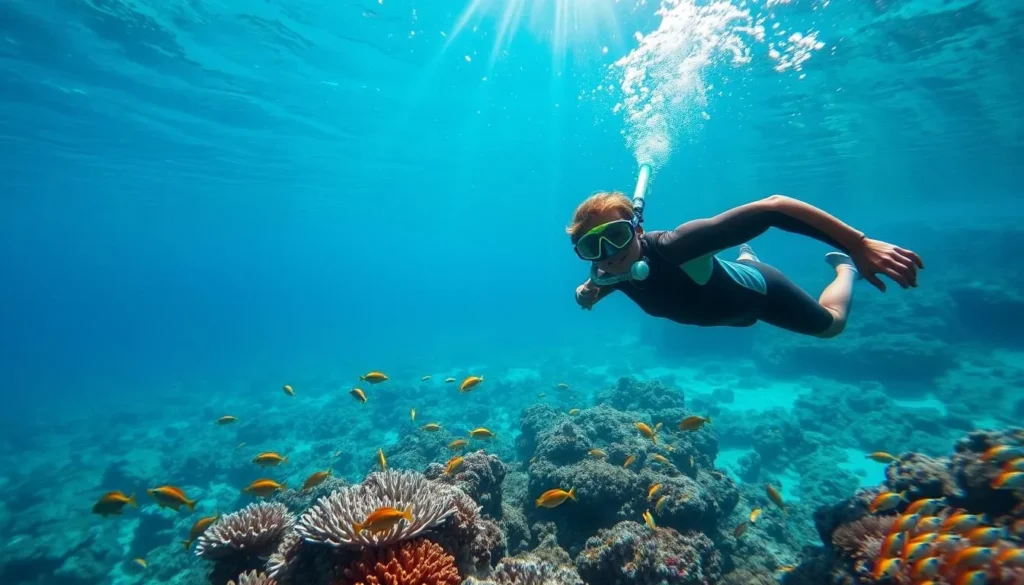
- Plan your day around the tides for optimal snorkeling and swimming
- Take advantage of early mornings for photography and calm seas
- Keep your itinerary flexible to adjust to daily weather changes
Health and Safety Weather Considerations
Understanding the weather-related health and safety considerations is crucial for a enjoyable and safe trip to Niue. The island’s tropical climate can pose several health risks, and being aware of these factors will help you prepare accordingly.
Sun Protection Year-Round
Niue’s sunny weather year-round demands strict sun protection measures. You should always wear SPF 30 or higher sunscreen, a wide-brimmed hat, and sunglasses with UV protection. The tropical sun can be intense, even on cloudy days, so make sun protection a habit.
Cyclone Season Awareness
Niue’s cyclone season, which coincides with the wet season from November to April, requires special attention. While direct hits are rare, the island can experience tropical depressions and severe weather. Consider purchasing comprehensive travel insurance that covers weather-related disruptions. Stay informed about weather conditions through updates from the Niue Meteorological Service and follow local advice if severe weather threatens.
Conclusion: Choosing Your Perfect Time to Visit Niue
With its unique blend of natural beauty and cultural richness, Niue is a destination that caters to diverse traveler preferences. The ideal time to visit depends on your personal preferences and what you want to experience during your trip.
For those prioritizing dry weather and whale watching opportunities, July and August are the best months to visit. Alternatively, September and October offer a more relaxed atmosphere with similar benefits, making them excellent alternatives to the peak season.
If you’re on a budget, consider visiting during the wet season months of February through April, when accommodation and flight deals are more readily available. Special interest travelers should time their visits accordingly: whale enthusiasts for July-September, fishing enthusiasts based on target species, and culture lovers during Constitution Week in October or Village Show Days.
Regardless of when you choose to visit, Niue’s warm hospitality, stunning natural beauty, and unique experiences ensure a memorable tropical getaway. By choosing the right season for your preferences, you can have a truly unforgettable experience in this Pacific destination.
The above is subject to change.
Check back often to TRAVEL.COM for the latest travel tips and deals.
